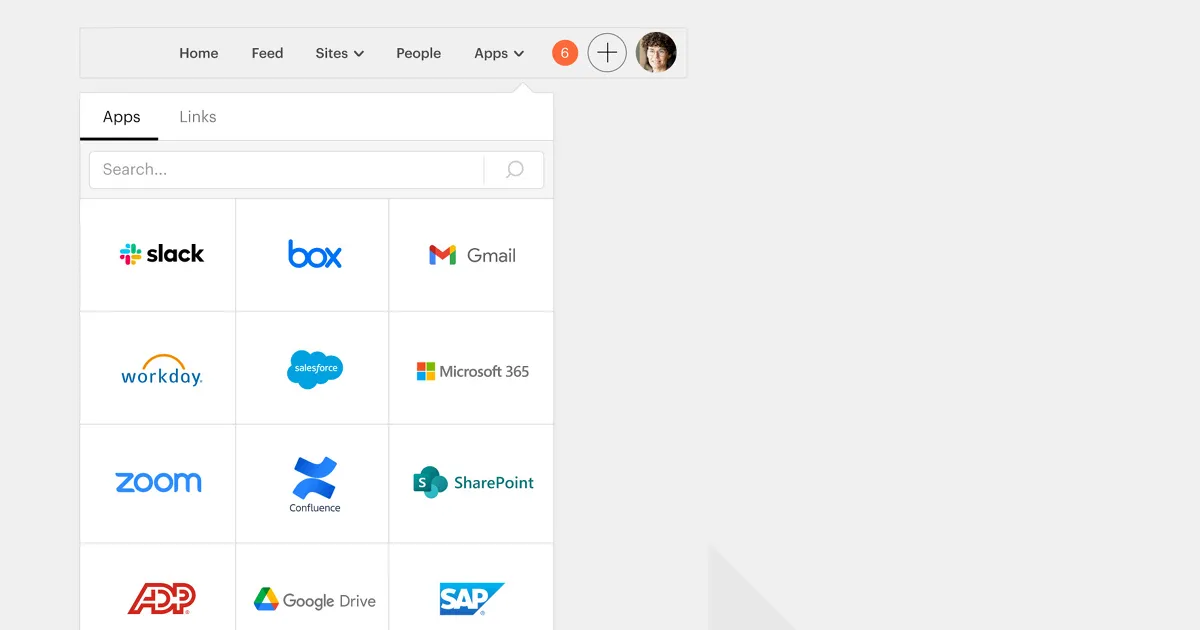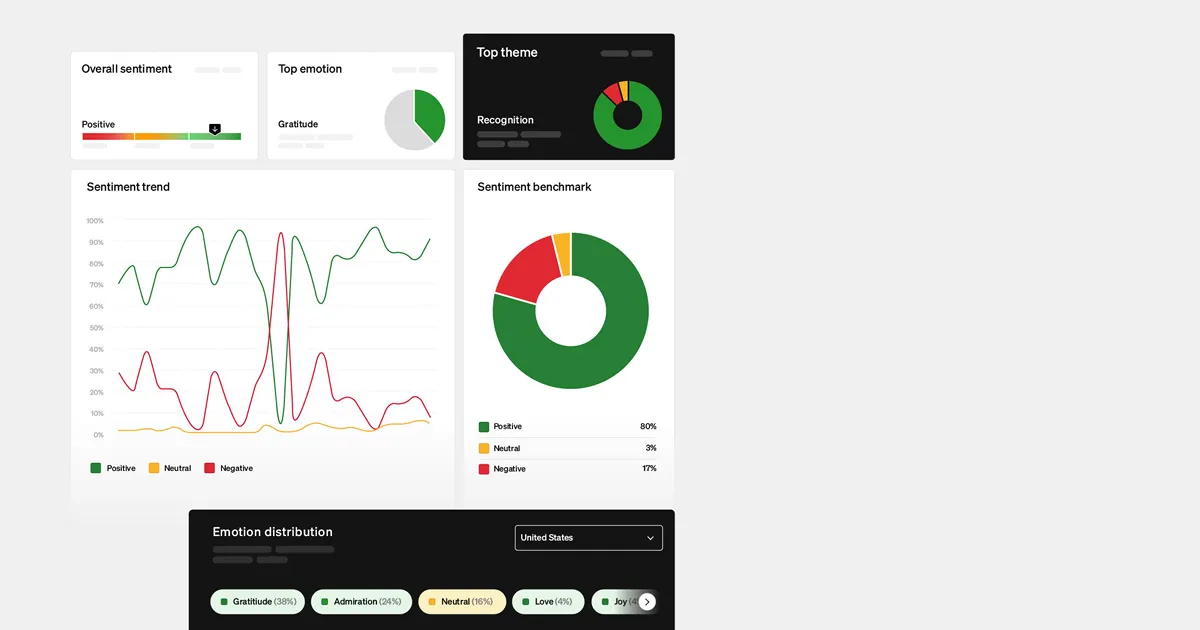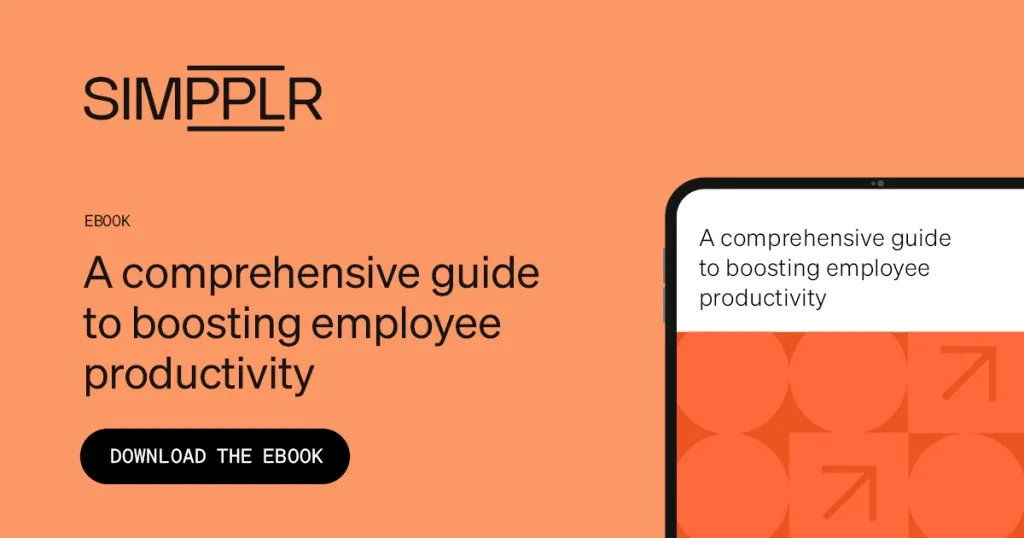To boost employee productivity, you need to know how to measure employee productivity. Without measurable employee productivity metrics, you won’t be able to see if your initiatives are working. You won’t know if your employees are becoming more or less productive.
To give you the insights you need, let’s look at how to calculate employee productivity. We’ll also review the metrics and tools that can provide accurate readings of employee input and output.
Read on for actionable insights, and learn more in our comprehensive guide to boosting employee productivity.
The importance of measuring productivity
Employee productivity is a way organizations measure the contributions of their teams. It’s no surprise that organizations want their employees to complete tasks more efficiently. Engaged and productive employees can drive a 23% increase in profitability.
But employee productivity isn’t just about boosting employee output to boost profits.
When employees are set up to work effectively and efficiently, it provides multiple benefits to them.
- Employees are more satisfied with their work.
- Employees have a better experience.
- Employees are less likely to experience burnout.
- Employees are less likely to quit.
Increasing productivity boosts employee engagement, which also has a direct impact on an organization’s bottom line. Each year, companies lose a collective $8.8 trillion due to the lost productivity of disengaged employees. Measuring and boosting productivity has real, tangible impacts on both organizations and individual employees.
Explore how an AI-powered intranet can elevate productivity
Challenges in measuring productivity
While boosting employee productivity sounds like a win-win, it doesn’t come without its challenges. Measuring employee productivity can be complicated.
Many organizations struggle with measuring employee productivity. They focus on productivity time (getting employees to work more) instead of employee productivity (getting employees to produce more).
Employee productivity and productivity time aren’t the same.
- Productivity time is the amount of time an employee is productive during a set period of time.
- Employee productivity is the overall amount of output an employee produces in a set period of time.
By focusing on increasing productivity time (instead of employee productivity), organizations can actually drive negative outcomes and push employees toward more frustration, disengagement, burnout and lost productivity.
Measuring employee productivity can also be challenging due to:
- Varying work output. Functions have varying standards that make it difficult to identify tangible worker output across industries
- Lack of visibility (especially in remote environments). Managers cannot physically observe all the activities of employees.
- Time zone differences. Managers with remote teams may not operate on the same schedule, limiting their ability to view real-time employee activity.
- Varying work environments. Employees may have elements in their work settings that impact their ability to produce output (such as poor office conditions, lack of access to quality tools, etc.).
- Dependence on self-reporting. Managers may need to rely on an employee’s accurate and honest report of their time use and output.
- Overemphasis on activity measurement. Organizations may use monitoring software to focus too heavily on measuring productivity time instead of actual employee productivity.
- Resistance to monitoring. Employees may be resistant and uncomfortable with monitoring software that can feel like micromanaging and privacy invasions.
Measuring employee productivity may be challenging, but it’s not impossible. Once you understand the challenges, you can identify the right employee productivity metrics to assess accurately (and increase) your team’s output.
Learn the difference between productivity and efficiency
How to measure employee productivity

While there’s no one right way to measure employee productivity, a common method exists that can help you determine how much output your employees produce.
Let’s look at how to calculate employee productivity using a common production output formula.
Employee Productivity = Output / Labor Input
To determine employee productivity, measure the units of output (goods, services, deliverables, etc.) an employee produces based on their input (time, effort, resources, etc.).
- Determine the output. Output is the quantity of goods or services produced within a specific timeframe. This could be the number of items manufactured, services rendered, or any other relevant measure that reflects the work completed.
- Determine the labor input. Labor input is the amount of work contributed by employees during the same period as the output measurement. This can be measured in various ways, such as the total number of hours worked, the number of full-time equivalent (FTE) employees, or the total labor cost.
- Determine employee productivity. Divide the output by the labor input to determine employee productivity.
In some industries, the output metric may be clear. For example, a bakery may measure the number of loaves of bread, or a sales department may count the number of calls made by the salesperson.
Other industries may have to get more creative. For example, a graphic designer may need to assign a value to the designs they create based on the difficulty and time needed to produce each asset. Then, they could count the value of the items they created over a set amount of time instead of the number of items created.
Remember that output is just one way to track employee productivity.
Let’s look at a few other methods for tracking employee output.
Common key employee productivity metrics
In addition to measuring concrete output per worker, you can also track employee contributions in other nuanced ways. Consider how you can also use these key employee productivity metrics and factors.
- Sales per employee. How many sales and/or how much value in sales does an employee produce?
- Revenue per employee. How much revenue does the employee bring in for the organization?
- Time usage. How does an employee use their time at work?
- Task completion rate. How long does it take an employee to complete specific tasks?
- Work quality / performance. What is the quality of the output of an employee?
- Project progress. What are the current stages and timelines for an in-progress project for a specific employee?
- Customer satisfaction rates. How happy are customers with the quality of an employee’s work?
- Task prioritization. How well does an employee prioritize tasks and manage urgency and task ranking?
- Error rates. How many errors or inaccuracies does an employee make?
- Technology usage. Is an employee using technology and tools to the best of their ability?
- Absenteeism. What is the rate that an employee is late or doesn’t show up to work?
- Training participationß. How much does an employee participate in new training or learning programs?
Employee productivity isn’t about how much an employee works. It’s also how they work. Track metrics that give you an accurate, insightful look at the way your team acts, not just how much they produce.
Employee productivity measurement tools
Now that you know what to look for when measuring employee output, let’s look at some employee productivity measurement tools that can help you with the process. Each of these tools can be used to unlock insights into how your team works, how much they produce, and how they spend their time.
CRM and POS systems
You might already have access to tools to help you monitor and track employee output. For example, you might use a customer relationship manager (CRM) to calculate the number of sales made by each team member. Or, you may have a point-of-sale (POS) system that tracks the amount of products sold by each employee. Look to your own internal systems to find metrics tied to employee output.
Time tracking tools
Time tracking tools calculate the amount of time employees work on projects and tasks. They can work manually (such as when an employee clocks in and out when working on specific tasks or client projects) or automatically (such as through software that tracks when an employee is active on a specific program or task). Both types of time tracking tools can help you document the amount of time employees are actively working. Examples include Toggl, Harvest and Clockify.
Project management tools
Keeping a clear view of project timelines can help you gauge employee productivity and progress, while setting clear expectations that hold employees accountable. Use a project management tool to outline each step of a project and assign dates to each task. Examples include Asana, Trello and Jira.
Real-time chat and collaboration tools
Real-time chat and collaboration tools allow you to communicate and work together — no matter where you are. Examples include Simpplr, Slack, Google Docs, Microsoft Teams and Zoom.
Simpplr’s comprehensive EX platform acts as a hub for team communication and collaboration. People managers, employees and teams can:
- share updates, ask questions, and interact with other employees in a centralized and safe space.
- promote a collaborative culture and help bridge the gaps and silos that form within an organization.
- communicate with each other across SMS, email, mobile, desktop, displays and beyond. As a people manager, you can deliver targeted communications across every channel and device, with detailed analytics that capture reach, comprehension and sentiment.
Performance management tools
Use performance management tools to keep an accurate report on employee success. Examples include Lattice and Workday.
HR information systems (HRIS)
Data in your HR systems can help you see if and when employees are showing up to work. Use HR information systems to view employee attendance, truancies and participation. Examples include BambooHR, Workday and ADP.
Simpplr offers native integration with the most well-known people data sources — including Active Directory, Google Workspace, Okta, Salesforce, Workday and UKG Pro — and the platform’s merge connectors effortlessly integrate many other HRIS systems.

Employee monitoring software
Monitor software installed on an employee’s computer can track the amount of time an employee is active, track keystroke activity, monitor the time use of applications, and prevent the use of specific websites and apps. Examples include Hubstaff, Teramind and ActivTrak.
Collect employee feedback
When measuring employee productivity, don’t forget the most important piece of the puzzle — your employees. Look, listen — and get your team involved!
Employee feedback is one of the best resources for measuring for continuous improvement.
Employee feedback is essential for learning about the current working conditions impacting productivity and discovering if new initiatives to boost productivity are working.
- Survey employees. A well-crafted survey can help you understand the progress and course-correct.
- Engage in employee listening. Use an employee listening tool to unearth hidden employee sentiment that traditional surveys often miss. The right employee experience platform integrates employee listening to deliver an ongoing stream of insights by analyzing a broad range of signals that reveal trends, patterns and themes to help you improve EX and achieve better outcomes.
- Review usage stats. Review usage stats on your EX platform to get concrete data on how employees are spending their time.
Simpplr’s Employee Listening tool combines survey responses with AI-powered passive listening to detect underlying sentiments and emotions — so you can take data-driven action. The AI surfaces insights into a broad range of sentiment data gathered throughout the Simpplr platform, incorporating polls, pulse and traditional surveys, Sentiment check, Awareness check, and everyday interactions, like comments.

Find out what employees need to increase their efficiency, work more effectively, and feel better while doing it.
You likely have a wealth of data to help measure and improve employee productivity. Before creating new systems, look to your existing software to see what metrics are already available to you.
Boost employee productivity in the right ways
Boosting employee productivity is good for business and for employees — but only when approached and measured in the right ways. If you want to increase productivity, first measure it in ways that will empower and engage employees, not push them away.
Get our comprehensive guide to boosting employee productivity to dive deeper into how you can increase productivity without burning out your workforce. Then, see how Simpplr can help employees accomplish more in less time. Request a demo to see how Simpplr’s modern intranet can improve employee productivity within your organization.


















